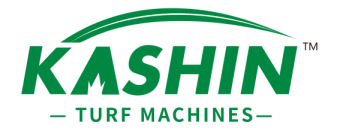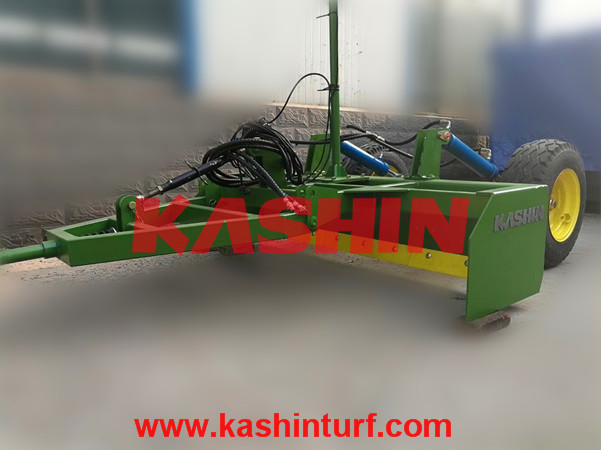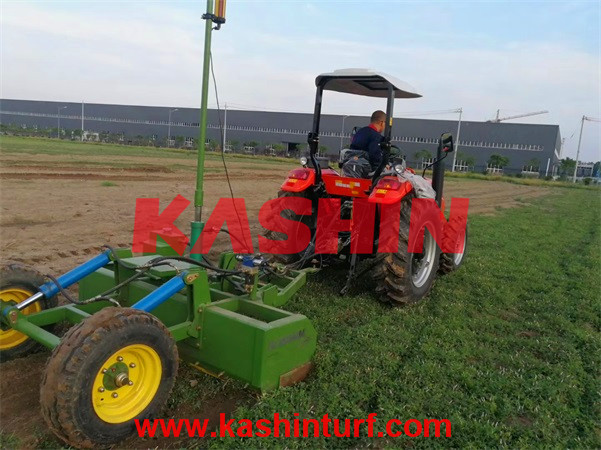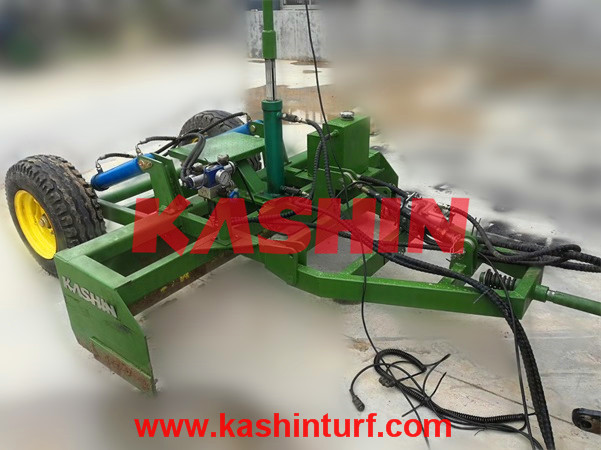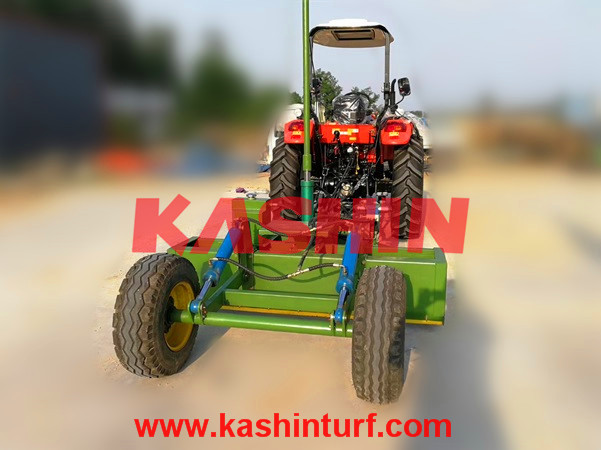Several tips in lawn maintenance
Pruning
Whether the leaves and roots of lawn plants are healthy, proper pruning is an important factor. The rule of pruning is that each cut cannot exceed one-third of the height of the grass. Since cutting the grass must follow the one-third rule (otherwise it will cost money for planting after two years), it will be difficult to cut the grass after it is too long. There is only one way, which is to cut frequently.
If the leaves are too high, the root system will not necessarily be developed. The root system is related to grass species, soil characteristics, rainfall, and fertilization. At the turn of spring and summer, it is generally necessary to trim once a week, and in midsummer, it can be trimmed every ten days. Generally speaking, the grass can be higher in summer to protect the lawn from high temperature damage. For example, the ideal height of a certain kind of grass is 6 cm, so when it grows to 8 cm, it is best to trim it in time before it reaches 9 cm.
Different grass species have different growth patterns. High grass should leave more grass, otherwise the sun exposure area will be too small. The creeping grass can be kept lower to 3 cm.
If you trim regularly, but the lawn still feels messy after trimming, you can check to see if the blade of the lawnmower is blunt. Blunt blades are very destructive to the lawn. Because the torn grass blades are more injured than the neatly cut blades of grass, the germs are very easy to invade, so after a blunt knife cuts the grass, the lawn often turns white-gray, and after a day or two, it turns to burnt yellow. Treatment often causes large areas of necrosis.
The blades should be sharpened frequently. Generally, the rotary blades should be sharpened every ten days, and the hob blades can be sharpened once every three months. If the grass blade is tough, the sharpening cycle should be shortened.
It is normal for the newly planted turf to be irregular, and it will naturally become neat after the turf is completely closed.
Second, broken grass
An ordinary lawn mower can become a grass covering lawn mower if it has a doughnut-shaped cutter head and an inclined blade tip. The outer part of the blade can straightly cut the blade of grass, and the stable negative pressure formed by the inclination of the blade tip causes the blade of grass to be repeatedly beaten in the cutter head until it becomes powdery. Finally, the curved edge of the central part of the blade forms a downward airflow to flush out the grass powder and leave it in place on the lawn.
After the lawn is trimmed by the grass covered lawn machine, the grass powder left in place is very fine. At this time, there is no need to collect grass. The lawn looks very beautiful and gives people a very fine feeling. Because no grass is harvested, work efficiency can be doubled. There is evidence that shredded grass mulch will not produce dense grass mats that affect air permeability, water permeability, and nutrients, and are easy to breed diseases and insect pests. The main component of straw felt is the cellulose of leaves and stems, not the leaves themselves. The grass meal is entirely the tip of fine-grained grass. The water content is often as high as 85%. Therefore, the decomposition rate is very fast, which can promote moisture and nutrients quickly. Decompose it out and return it to the lawn. The grass mat is mainly the result of excessive fertilization, and the lawn grows wildly after flooding and lacks maintenance. Grass meal mulching can save more than 25% of the annual organic or inorganic fertilizer consumption.
Generally speaking, in the hot and dry summer, every five to six days, the lawn needs 25 millimeters of water. Most sprinklers can pour about 8 mm of water in an hour. Three hours on the nozzle is enough in theory for one week. But the actual situation should be started intermittently. After spraying every 20 minutes, let the water soak the ground before starting, which can really improve the water efficiency. In addition, lawns covered with grass powder can save about one-third of water.
How can the performance of grass powder mulch machine be optimized? The method is as follows:
- Cut frequently: Cut once every five days, and cut once every seven days when it is dry.
- Cut slowly: A leisurely walking speed is the best way to mulch with broken grass.
- The throttle is always at the maximum position.
- Clean the cutter head before cutting the grass.
- The blade should be sharp (this is the most important point)!
- Prune the water after it has dried, not on the wet grass.
- Adjust the height of the grass to be higher, and only cut the tip of the grass about 2 cm each time.
- If the grass grows fast, you should not cut too much at one time, but should be cut in two or more times.
- Do not have garbage, fertilizers, etc. on the lawn.
- Read the manual and use the lawn mower correctly.
Three, maintain moderate grass mat
Grass mat is a mulch with undecomposed plant residues tightly intertwined between the lawn stalks and the soil layer. If the grass mat can be dynamically balanced, decomposed evenly and properly, it can timely supplement a variety of nutrients to the lawn. However, if the grass mat cannot be decomposed in time, the material exchange between the lawn root system and the outside world will be blocked. The thicker the grass mat, the more serious the problem. People often blame lawn problems on grass felt without analysis, making it easy to overlook the maintenance methods in watering, fertilizing, and pruning.
All lawns should maintain moderate grass felt, which is a healthy lawn. However, the accumulation and decomposition of straw mat must reach a dynamic balance. When the thickness of the grass mat exceeds 1 cm, it needs to be removed by selecting suitable weeding equipment.
The damages caused by grass felts are: the turf is damaged when trimming; the wheels get stuck in the grass felt and push hard; the chance of pests and diseases increases; the waste of fertilizer and insecticide and herbicide; the lawn is not resistant to heat and drought; the grass roots develop towards the grass felt layer. The root system in the soil shrinks; dense and unmanaged grass mats can kill the lawn in pieces.
After the grass mat decomposes faster, the root system and the appearance of the lawn will be significantly improved.
Generally, the problem of lawn mats that are regularly trimmed is not prominent. But you need to consider the following steps when grooming:
Use a grass thinning machine to comb the grass, scrape the grass mat, and then use a root cutter to cut and destroy the roots of the grass mat layer that grows on the soil layer, and then use a punching machine to perforate the lawn. Hole or hollow perforation can be used. Hollow holes are generally used in golf courses, but the efficiency of hollow holes is not very high. The purpose of perforating at this time is mainly to make the roots of the “wounded” lawn after combing the grass and cutting the grass roots quickly develop into the moisture-rich soil. The effect of this curing process can generally be seen after three days.
Four, lawn drilling
In the past, golf turf experts were often unwilling to tell others why their lawns were always growing well. In fact, the trick is to perforate the lawn. The lawn must be perforated for ventilation.
—In spring, it’s best to rent a punching machine. The lawn needs to be drilled two to three times a year. After the lawn is perforated and ventilated, the hard and dense soil can be turned over, and the dense grass can be pierced to allow the grass to breathe smoothly, add moisture and nutrition, and quickly decompose the organic grass felt layer on the ground to promote the grass’s growth. The root system grows sturdily; it promotes air, water and nutrients to penetrate the grass mat and soil layer; it promotes the soil particles to cross the obstacles of the grass mat, accelerate the circulation, and enhance the ability of the lawn to resist drought, disease and pests. The metabolism of the lawn is enhanced, the oxygen production is increased, watering and fertilization are saved, and the lawn is greener and healthier, and the vitality and elasticity of the lawn are increased.
